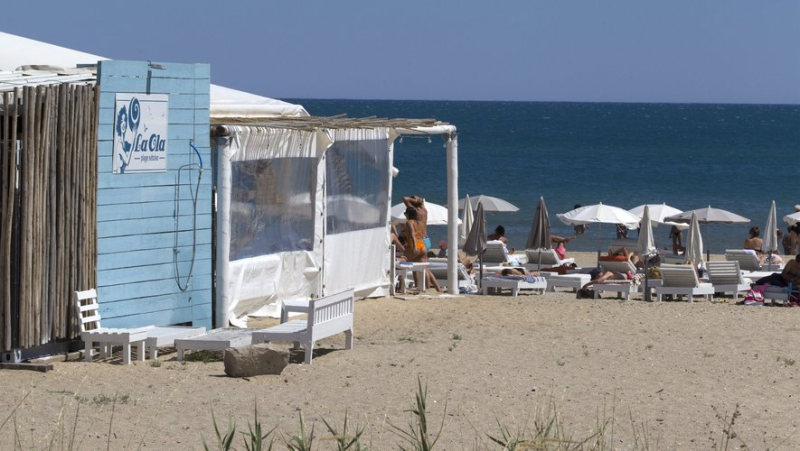Environmental protection: these straw huts forced to move to urban areas

A Sète, deux paillotes ont été contraintes de déménager et s'installer sur la partie urbanisée. MAXPPP – Guillaume Bonnefont
À Sète, en 2022, et à La Grande-Motte, cette année, le paysage a quelque peu été modifié. La perte d’activité est intégrée par les plagistes grand-mottois. Bilan avec les Sétois.
Opponents of the huts installed on the Grand Travers site, on the coast of La Grande-Motte, ended up winning their case. The Toulouse court requested, last April, the departure of the private beaches installed there. The reason ? Le Grand Travers is a beach classified as a remarkable area. No structure should therefore be mounted there.
Result: three of the huts, Facile Mer, Paillote Bambou and La Voile Bleue, the three largest in La Grande-Motte, were forced to plant their parasol elsewhere, on the side of the area urbanized area of Motte du Couchant. Consequence: the season promises to be imprecise. "I am going this year with a forecast budget cut by 40 %", specifies Pierre-Yves Bricon, from the Bamboo hut.
Around thirty fewer positions at Paillote Bambou
At the beginning of June, its forecast is already tainted: activity shows a – 42% compared to last year at the same time. "I have to watch day to day if I don't want to be in trouble". There are many reasons, but the most important is accessibility. At the Grand Travers, customers could park along the seaside road. There, the hut is at the heart of an urbanized neighborhood. "In May -June, we have a lunch clientele who comes from Montpellier for lunch. We no longer see her because it represents an additional 20 minutes of travel. She doesn’not have much time for lunch before going back to work".
Added to this is parking, which is payable all year round. Certainly, his boss has rented a space for customers with a capacity of around sixty cars. With provision of a free shuttle. "But that's obviously not enough", laments Pierre-Yves Bricon. The latter has been forced to reduce its workforce if it wants to get by this year. "I’have deleted around thirty positions, no choice".
"I’I was forced to increase my prices"
What the beachgoers of La Grande-Motte are experiencing, some in Sète experienced it two years ago. In the summer of 2022, the La Praia and La Voile Rouge huts, then located near Marseillan, had to be set up on Villeroy beach, again in an urbanized area. "It cost me around 60 000 euros in incidentals", confides Elodie Moran, the boss of The Red Sail. Since then, things have improved somewhat: "my budget is now a little higher, but I have been forced to increase my price".
If she has more customers, due to the proximity to the city, the average ticket "is lower than before"< /em>. Explanation: "before, as we were far away, people came for the day ; there, they are very often just passing through". "The move was painful, analyzes Claude Herzog, from La Ola and representing beachgoers. The mode of operation of the two beaches has changed, there is no longer the same atmosphere".
Larger surfaces in Sète
The City of Sète nevertheless gave a helping hand. "The surfaces have gone from 800-1 000 m² at 1 000-1 200 m²", says Francis Hernandez, deputy mayor. Another measure: the length of the season. It went from 6 months to 8 months. Objective: to enable huts to adapt more profitably.




